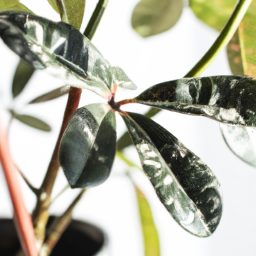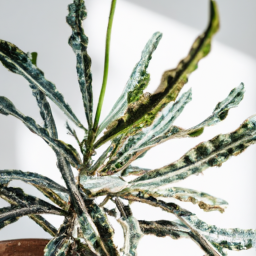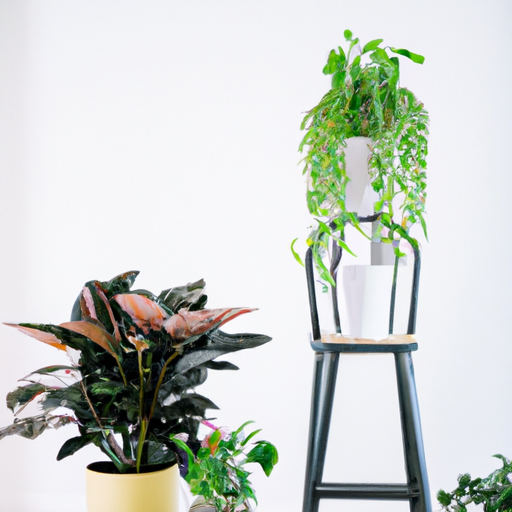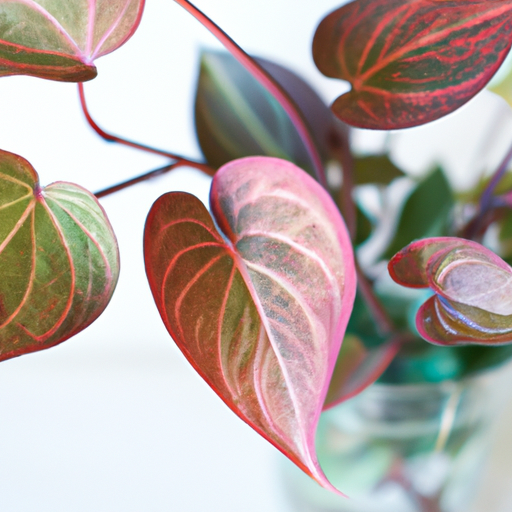
Are you looking to bring a touch of nature into your living space? One of the easiest ways to do so is by incorporating home plants into your decor. Home plants not only add beauty and freshness to your home, but they also have a variety of health benefits. From improving air quality to reducing stress levels, home plants can make a big impact on your overall well-being. In this blog post, we will explore the world of home plants and provide tips on how to choose the best plants for your space. So, whether you’re a seasoned plant parent or a beginner looking to green up your home, keep reading to learn more about the wonderful world of home plants.
Benefits of Having Home Plants
Improves Air Quality
One of the most significant benefits of having home plants is that they can help improve the air quality in your living space. Plants absorb carbon dioxide and release oxygen through the process of photosynthesis, which can help to purify the air and make it healthier to breathe. Some plants, such as the spider plant and peace lily, are particularly effective at removing toxins like formaldehyde and benzene from the air.
In addition to releasing oxygen and removing toxins, plants can also help to increase humidity levels in your home. This can be especially beneficial during the winter months when indoor air tends to be dry due to heating systems. By adding plants to your home, you can help to create a more comfortable and healthy environment for you and your family.
Overall, having home plants can help to create a cleaner and fresher living space by improving air quality and increasing humidity levels. This can have a positive impact on your overall health and well-being, making it worth considering adding some plants to your home decor.
Reduces Stress and Boosts Mood
Another benefit of having home plants is that they can help to reduce stress and boost your mood. Studies have shown that being around plants can have a calming effect on the mind and body, helping to lower stress levels and promote relaxation. In fact, simply looking at a plant can help to reduce anxiety and improve overall mental well-being.
Plants can also help to create a sense of tranquility and connection to nature, which can be particularly beneficial for those living in urban environments or areas with limited access to green spaces. By bringing nature indoors, you can create a more peaceful and harmonious living environment that can help to improve your mood and overall quality of life.
In addition to reducing stress and boosting mood, caring for plants can also provide a sense of purpose and fulfillment. The act of nurturing and tending to plants can be a rewarding experience that can help to promote mindfulness and relaxation. So, if you’re looking to add some positivity and tranquility to your home, consider incorporating some plants into your decor.
Purifies the Air and Enhances Decor
Aside from the health benefits, home plants can also serve as natural air purifiers and enhance the overall aesthetic of your living space. Plants can help to absorb pollutants and toxins from the air, making it cleaner and healthier to breathe. This can be particularly beneficial for those with allergies or respiratory conditions, as plants can help to reduce the presence of allergens and improve indoor air quality.
Furthermore, plants can add a touch of beauty and freshness to your home decor. Whether you prefer lush green foliage or colorful blooms, there are a wide variety of plants to choose from that can complement your style and enhance the ambiance of your living space. From hanging plants to succulents to flowering plants, there are endless options for adding a pop of nature to your home.
By incorporating home plants into your decor, you can not only enjoy the aesthetic appeal but also reap the benefits of cleaner air and improved health. So, whether you’re a seasoned plant enthusiast or new to the world of indoor gardening, consider adding some plants to your home to enhance both your living space and your well-being.

Top 10 Low-Maintenance Home Plants
Introduction
Choosing the right plants for your home
When it comes to adding greenery to your living space, it’s important to choose plants that are low-maintenance and easy to care for. This not only saves you time and effort, but also ensures that your plants thrive in their new environment. In this article, we will explore the top 10 low-maintenance home plants that are perfect for beginners and busy individuals.
The benefits of having plants at home
Plants not only add a touch of nature to your home, but they also have numerous health benefits. They help purify the air, reduce stress, and boost your mood. With the right plants, you can create a peaceful and relaxing environment that promotes overall well-being.
How to care for low-maintenance home plants
Low-maintenance plants are perfect for those who have a busy schedule or are new to plant care. To ensure your plants thrive, it’s important to provide them with the right amount of sunlight, water, and nutrients. Regularly check the soil moisture and trim any dead leaves to keep your plants healthy and happy.
Top 10 Low-Maintenance Home Plants
1. Snake Plant
The snake plant, also known as mother-in-law’s tongue, is a popular choice for beginners due to its hardy nature. It can thrive in low light conditions and only needs to be watered occasionally. This plant is perfect for bedrooms and living rooms, as it helps purify the air and improve indoor air quality.
When caring for a snake plant, make sure to avoid overwatering as it can lead to root rot. Allow the soil to dry out between waterings and place the plant in indirect sunlight for best results. With minimal care, the snake plant will thrive and add a touch of greenery to your home.
In addition to its low-maintenance nature, the snake plant is also known for its air-purifying properties. It can remove toxins such as formaldehyde and benzene from the air, making it a great choice for those looking to improve indoor air quality.
2. Pothos
Pothos, also known as devil’s ivy, is a versatile plant that can thrive in a variety of light conditions. It is perfect for beginners as it is easy to care for and can tolerate neglect. Pothos plants have trailing vines that make them ideal for hanging baskets or shelves.
To care for a pothos plant, place it in indirect sunlight and water when the top inch of soil feels dry. Avoid overwatering as it can lead to root rot. Pothos plants are known for their air-purifying properties and can help remove toxins from the air, making them a great addition to any home.
With proper care, a pothos plant can grow quickly and add a pop of green to your living space. It is a low-maintenance plant that is perfect for beginners and busy individuals looking to add some greenery to their home.
3. ZZ Plant
The ZZ plant is a popular choice for those looking for a low-maintenance plant that thrives in low light conditions. It has glossy, dark green leaves that add a touch of elegance to any room. The ZZ plant is drought-tolerant and only needs to be watered occasionally.
To care for a ZZ plant, place it in indirect sunlight and water sparingly. Allow the soil to dry out between waterings to prevent root rot. The ZZ plant is known for its air-purifying properties and can help remove toxins from the air, making it a great choice for indoor spaces.
With minimal care, the ZZ plant will thrive and add a touch of greenery to your home. It is a low-maintenance plant that is perfect for beginners and busy individuals looking to add some greenery to their living space.

How to Choose the Right Home Plants for Your Space
Understanding Your Space
When it comes to choosing the right home plants for your space, the first step is to understand the environment in which the plants will be living. Take note of the amount of natural light that the area receives, as well as the temperature and humidity levels. Different plants have different requirements when it comes to light, temperature, and humidity, so it’s important to choose plants that will thrive in your specific space.
In addition to considering the environmental factors of your space, it’s also important to think about the size and layout of the area where you plan to place your plants. Some plants require more room to spread out, while others are better suited for smaller spaces. Take measurements of the area and consider how much space you have available for your plants.
Once you have a good understanding of your space and its limitations, you can start thinking about the types of plants that will work best in your home. Consider the overall aesthetic that you’re going for and choose plants that will complement the style of your space. Whether you prefer lush, leafy plants or flowering varieties, there are plenty of options to choose from that will enhance the look of your home.
Choosing the Right Plants
When it comes to choosing the right home plants, there are a few key factors to keep in mind. First and foremost, consider your own level of experience with plants. If you’re a beginner, it’s best to start with low-maintenance plants that are easy to care for. Some good options for beginners include snake plants, pothos, and spider plants.
Another important factor to consider when choosing home plants is the amount of natural light that your space receives. Some plants require bright, direct sunlight to thrive, while others prefer low light conditions. Be sure to choose plants that will be able to thrive in the light conditions of your space.
In addition to considering light requirements, it’s also important to think about the amount of water and humidity that your plants will need. Some plants require frequent watering, while others prefer to dry out between waterings. Be sure to choose plants that have similar watering needs to make caring for them easier.
Caring for Your Plants
Once you’ve chosen the right home plants for your space, it’s important to properly care for them to ensure that they thrive. Be sure to water your plants regularly, but be careful not to overwater them, as this can lead to root rot. It’s also important to provide your plants with the right amount of sunlight and humidity to keep them healthy.
In addition to watering and providing the right environmental conditions, it’s also important to regularly check your plants for pests and diseases. Keep an eye out for signs of infestation, such as yellowing leaves or sticky residue on the leaves. If you notice any issues, take action quickly to prevent further damage to your plants.
Finally, be sure to regularly prune and fertilize your plants to promote healthy growth. Pruning helps to encourage new growth and keeps your plants looking their best, while fertilizing provides essential nutrients that your plants need to thrive. With proper care and attention, your home plants will bring beauty and life to your space for years to come.
Crisp Recap
If you’re looking to bring some life and greenery into your home, then home plants are the perfect solution. Not only do they add a touch of nature to your living space, but they also have numerous health benefits. Home plants can help purify the air, reduce stress levels, and even improve your mood. With so many different types of plants to choose from, there’s sure to be one that fits perfectly in your home.
Whether you have a green thumb or are a self-proclaimed plant killer, there’s a home plant out there for everyone. From low-maintenance succulents to vibrant flowering plants, the options are endless. With a little bit of research and care, you can create a beautiful indoor garden that will bring joy and beauty to your home. So why not add a touch of green to your living space and enjoy all the benefits that home plants have to offer?
Here are the top questions that we were asked:
Q1. What are some easy-to-care-for home plants?
A1. Some easy-to-care-for home plants include pothos, snake plants, spider plants, and peace lilies. These plants require minimal maintenance and can thrive in various indoor environments.
Q2. How often should I water my home plants?
A2. The frequency of watering your home plants depends on the type of plant and its specific needs. Generally, it’s best to water plants when the top inch of soil feels dry to the touch. Overwatering can be harmful to plants, so it’s important to allow the soil to dry out between waterings.
Q3. What are the best locations for home plants?
A3. Home plants thrive in locations with indirect sunlight, such as near a window with sheer curtains. It’s important to avoid placing plants in areas with direct sunlight, as this can cause the leaves to burn. Additionally, plants should be kept away from drafts and extreme temperatures.
Q4. How can I prevent pests from infesting my home plants?
A4. To prevent pests from infesting your home plants, regularly inspect the leaves and stems for any signs of pests. You can also use natural remedies such as neem oil or insecticidal soap to deter pests. Additionally, maintaining good airflow around your plants and avoiding overwatering can help prevent pest infestations.
Q5. How can I promote healthy growth in my home plants?
A5. To promote healthy growth in your home plants, ensure they are receiving adequate sunlight, water, and nutrients. Regularly fertilize your plants during their growing season and repot them as needed to provide room for root growth. Pruning dead or yellowing leaves can also help encourage new growth.
Emily Bloomfield is an interior designer and horticulturist specializing in incorporating indoor plants into interior spaces. With a background in both design and plant science, Emily offers a unique perspective on creating harmonious living environments through the synergy of greenery and aesthetics. Her creative ideas and innovative solutions make her a sought-after authority in the field.


